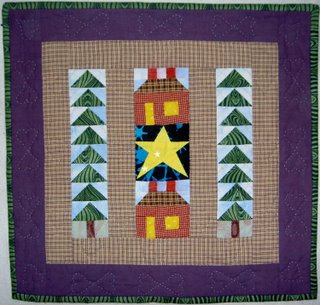Quilter's Questions
Q: Before i found ya'll, i had a friend helping me. we put the quilt together with the batting and the backing the same measurements as the quilt. I've got it on an old rack now, but i am hesitant to start the quilting, afraid that the edges will not be good when i finish. what should i do?
Laura,
West Jefferson, NC
A: You raise an excellent point. When you quilt, your quilting stitches will tend to make the quilt top, back and batting get somewhat smaller, and generally at different rates.
At this point, I would add fabric to the backing and add batting. Assuming that the quilt is basted together, the first step is to remove enough basting so you can work with the outside 2-3” of the quilt back and batting.
The first step would be to add backing material. If you have more of the same material, you could add about 3” to each side of the piece. If not, you could add a contrasting piece of fabric to the backing, just like you would add a border to a quilt top. Once those pieces are added, be sure to press the seam allowances flat, and probably toward the bigger part of the quilt.
Next is to add batting. This, too, is relatively easy, following the instructions in this Article about Piecing Batting.
Once you have those extra pieces added, you’re ready to quilt without any worries. Baste the top, batting and backing. You will have extra batting and backing sticking out from your quilt top. I would baste those to each other. Normally I don’t do that, but since your batting is pieced, you will probably want to secure it, so the piecing is less likely to come out.
Once your quilting is complete, trim off the excess batting and backing as you normally would. It is likely that there will be just a small amount of the extra backing that actually remains in your quilt. I would use binding to cover the extra little strip.
The easiest way is to make your own binding. Before cutting fabric for the binding, measure how much of the backing you want to cover up. Add at least 1½” to that measurement. That will give you enough fabric to sew a ¼” of binding on the front, fold it around to the back, and secure it well past the seam for the extra fabric you pieced onto the back.
Hope that helps!
Happy Quilting!
![]()
Penny Halgren
www.How-to-Quilt.com
Inspiration and Education for Beginning Quilters
www.Rag-Quilt-Instructions.com
Fast, Fun and Funky Quilts
Quilt Greetings Across the Miles


